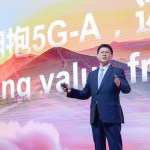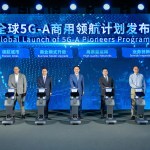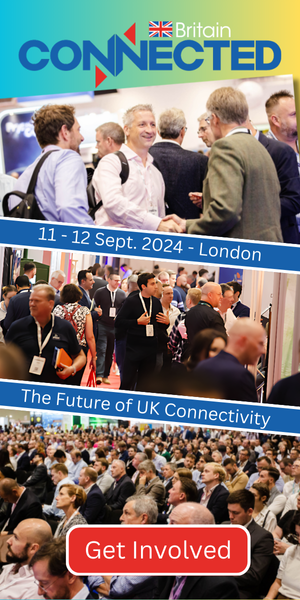At the Total Telecom Festival in December I was delighted to chair a roundtable discussion on accessibility. What is accessibility? Simply put, how people with disabilities can use the same technology as their abled bodied peers for work and personal lives.
Firstly, it is great to have a mainstream conference bringing the accessibility topic out into the open. Secondly, it was excellent to have participants from analysts, vendors, service providers as well as people with family who are disabled or responsible for accessibility/inclusivity within large corporations.
The numbers and the business case for accessibility are compelling. With a billion people in the world (1 in 7) suffering from some form of disability, most of us will be impacted at some point in our lives. 4% of children, 10% of the working population but over 75% of the over 65s have their lives affected by hearing impairment, vision impairment, physical or cognitive conditions. And, many of those with more acute conditions are unable to enter or remain in the workforce due to accessibility issues.
Why is this especially important to the telecoms industry? Fundamentally because mobile devices and broadband connectivity will be a vital link in allowing the disabled to participate fully in work and social activities. In addition, the advent of the Internet of Things (IOT) and the explosion in wearables also have major sensory replacement and enhancement implications. Under the old regime, all disabilities developed their technology separately and at vast expense. With mobile devices, tablets, TVs, wearables and sensors now available as a platform for everyone, access to specialist equipment, apps and services is much easier and certainly much more affordable. Now disabled people can join many online activities such as retail, banking and entertainment, whilst having the opportunity of getting into the workforce, leveraging those more accessible devices and exposing their individual skillset.
Developments in com puting, storage and network capabilities combined with a range of means of interacting with devices and applications such as touch, gesture, speech – and brainwave coming soon – all mean that senses can be enhanced or content adapted to suit an impairment. These are the key components falling into place to make all this possible: –
> Devices are getting more accessible with adaptation to screens and input assisted by speech, touch or gesture
> Smart homes mean that access to devices and functions helping around the house are easily adapted to different conditions: lighting that changes colour to announce a phone call or someone at the door is a great mash up example of connectivity, IOT and adapting to a disability. Add to this the potential of domestic robots and the opportunities enormous.
> Wearables & IOT bring consumer electronics in terms of high-powered camera, microphones and sensors to help individuals who have some sensory impairment better communicate, consume content or interact with 3rd parties for business or personal matters
> Smart city services also mean that the person with a disability can not only join the online community but can also better navigate their way through the village, town or city with assistive services based on iBeacons and information about accessible routes within the environment as well as public and commercial buildings
> Applications split into mainstream items such as social media and retail; and specialist apps for different conditions such as help seeing, interpreting speech and learning. People with different disabilities require a combination of regular apps as well as a few specialist ones that focus on enhancing the necessary additional inputs depending on their particular circumstances.
Not surprisingly, with so many contributing components coming from so many diverse sources, there is a lack of consistency when it comes to standa rds. This is true for the consumer electronics components as well as the operating systems and applications environments being used. Guidelines, such as those from G3ICT, as how to make all components more accessible and more interoperable do exist but more work is required. Mobile device manufacturers are taking accessibility more seriously with the Global Accessibility Research Initiative (GARI http://www.gari.info) listing many of the world’s accessible devices and applications.
It is essential to educate all parties about what different disabled people may need. The number of variations in conditions is enormous. Providing flexible font sizes, colour contrast, different speech rates and enhanced volume is obvious. The fact that we now have so many devices adaptable amd personalisable for everyone’s needs is an excellent basis for building a more accessible environment.
The fear factor from those outside of the disability area also has to be addressed.
> Parents of a child diagnosed with a disability need access to the technology and understanding of how it will allow their child to develop through education and work.
> Employers have to be made aware of the ways in which disabled people can contribute to business (deaf people doing online chat in a call centre, blind people coding, wheelchair-bound customer care agents and many more)
> Co workers need to understand how to best interact given different disabilities
In short, the call to arms is for everyone involved in the digital landscape to embrace accessibility from first principles. If digital product design includes accessibility from the get go, then the ease of accessibility and adaptability for all conditions is simplified. Adding dedicated accessibility devices and software on to an existing product is, as we know all too well, an ugly, painful and sub-optimal approach. And, ex tremely importantly, this new approach to design will improve everyone’s lives. Everyone finds themselves at certain times temporarily or situationally disabled. Drivers shouldn’t look at their smart phone screens, deep sea divers can’t use speech nor can people in the more frozen climates use touch through thick gloves!
Once the accessibility angle is built into the cycle of product/application development and included on every refresh cycle, then the issue of accessibility will simply become part of the personalisation that we have discussed for years around the mobile world. In the meantime, it is incumbent on all companies from the smallest applications developer to larger corporations offering services via their apps (including governments), to make sure accessibility is included in the process and implementation flows around digitisation.
Technology is no longer the barrier to accessibility it was 25 years ago. Awareness of the range of disabilities and their adapted needs, both in terms of user interfaces and preferred channels of communications, will lead to better designed products for everyone. Many exist already:
> Sign language via a video conference link
> Audio description of television programmes and films
> People with speech defects using email, Instant Messaging, chat and the like.
It is a question of making sure this is communicated to all parts of business and government as well as being built into both product development and channels to market. And, most importantly, adding knowledge transfer to all education, charity and NGOs to optimize awareness and usage for people when they enter the disabled marketplace.
In economic terms, this is a powerful group, representing some $4 Trillion of spending power. The more they can benefit from the digital premium and the more we can leverage technology to get them into the workforce, the stronger the group will become in economic terms.
For every business, every government department and for many families, more accessible devices, applications and services will benefit both internally and externally. This is not simply a matter of Corporate Social Responsibility (CSR) but an economic and moral obligation to use technology to build an inclusive society. So, let’s spread the word, build accessibility into products from scratch and let’s make everyone’s lives easier, more digital and more rewarding!
This article came out of the breakout roundtable on accessibility (technology for the disabled( at the Total Telecom Festival on 1st December with participation from analysts, vendors and telcos. As a telecoms analyst for over 25 years and a blind person, I am delighted that these two very separate worlds are coming together so well. Whatever your interest in disability, accessible technology, personal or professional, please get in touch to discuss my experience in this area and how I can help your business. www.lewisinsight.com or call +44 7824 360 747.
');

















